Control the chaos and unleash your team's potential with Extensis Connect / Learn More
Control the chaos and unleash your team's potential with Extensis Connect / Learn More

Photography and video are important brand elements. A brand style guide must guide their use as well as set forth procedures and rules for obtaining properly licensed and released stock imagery, and how to future proof the brand against copyright infringement claims.
Part 4, “Defining Your Brand Typography,” was the largest installment in the Creating a Brand Style Guide series. In it you learned about the importance of typefaces to your brand, including how many companies have commissioned custom fonts to give their brands something no other has; choosing type families over individual typefaces for maximum flexibility in your written communications and designs; selecting special-use fonts to augment your main brand type families; how to select and define font usage for digital documents such as websites, ebooks, PDFs, and more; controlling the licenses and uses of fonts to keep your organization on the right side of the law; how to share and distribute brand fonts to your team, both in-house and external entities such as freelancers, vendors, and print service providers, and; how to communicate to all the agents who may work with your brand the guidelines and rules of using type and fonts to the maximum benefit of the brand.
Increasingly common is the practice of defining brand-appropriate use of images and video without style guides. With the rise of the Visual Web, a landscape dominated by photos and videos shared through social media, as well as almost universally growing Internet speeds and bandwidth, photographs and video clips have become important elements of even formerly text-only websites as well as every other aspect of a brand’s online presence.
Defining image and video usage when representing the brand varies in its spirt and depth depending on the brand. A children’s clothing designer, for example, will define very different imagery guidelines than would a B2B SaaS provider.
Daysee Dae Fashions might include in its brand style guide directives regarding the use of images and video such as those in Figure 1.
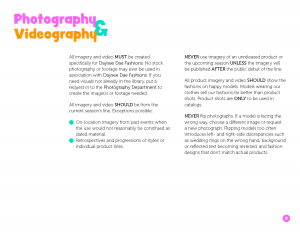
Figure 1: Guidelines to using photography and video footage.
The B2B software-as-a-service developer, serving a broader audience and being more concerned with abstract concepts and feelings conveyed by imagery than by the representation of specific products, might include more generalized guidelines in its brand style guide. It may declare moods to focus on in photography, emotions to elicit, or intellectual and emotional concepts to convey via imagery.
Include samples of appropriate visuals in your brand style guide. Designers and photographers understand examples of a visual language and can use them to learn and continue articulating that language. By presenting a series of images that evoke the desired emotions of the brand and fulfill the intent of the guidelines you will help your agents far more than mere written rules and information can. Figure 2 is an example of a style guide that uses imagery samples and minimal text to establish the visual language of the brand’s photographs.
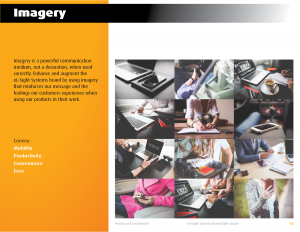
Figure 2: Establishing a visual language and communicating abstracts to achieve with imagery.
Consider adding language that defines the technical specifications for photography and videography as well. Specifications could include preferred file formats such as JPEG or TIFF for images and MPEG-4 or AVI for video, pixel dimensions, resolution, color depth, frame rate, and other details that can both affect the quality and display of such files, but also alter workflow and file compatibility with different software and vendors’ and partners’ software.
Also provide a path—explicit or implied—that creatives should follow when they need imagery not already available within the brand’s asset library. If using stock photography or footage is disallowed, as in the Daysee Dae Fashions style guide, explain where and how new imagery be obtained. If stock content may be purchased on behalf of your organization, make sure your agents know how to do it correctly, which licensing you and your asset control team approve, and how to properly store licenses and proofs of purchase for long-term archival and instant recall.
Stock photography and stock footage is offered under diverse licenses and terms, often with the same agency tendering several options.
Figure 3 shows an image available from Adobe Stock.This image is available with Adobe’s Standard and Extended licenses as revealed by the tabs at the right. The Standard license doesn’t display a price because the user currently logged into the site has credits on his account. Those credits would cover the purchase of the image under the Standard license. An additional $79.99 would be due if the image were licensed under the Extended license. Figure 4 shows a different image available from Adobe Stock. It offers neither the Standard nor Extended license. As this image is part of a special collection, it is available only with the Enhanced license, and at two different sizes that affect the medium of usage. Licensing the Small (1126 x 1688 pixel) image at $249.99 would deliver an image well suited for Web or digital document use, or for printing at a small size, but that would lose quality if blown up in print to the size of a full page or larger.

Figure 3: An Adobe Stock image available with Standard and Extended licenses.
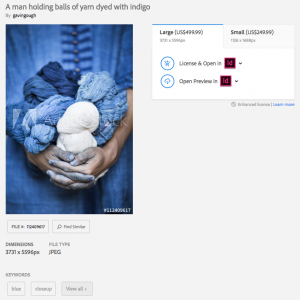
Figure 4: A premium Adobe Stock image offered only under an Enhanced license.
The differences in Adobe’s three types of licenses are explained by clicking the “Learn More” link beneath the tabbed licensing box. In a remarkably brief and easy to understand page bereft of the usual legalese, Adobe explains that using an image with a Standard license grants you the ability to use that image in a document with fewer than 500,000 printed copies or, if the document is electronic or broadcast, one that is seen by fewer than half a million viewers (see Figure 5). Should you hope to use the image in such a way that more than 500,000 people see it, you will need to purchase an Enhanced or Extended license to remove that limitation. Neither of these includes an upper limit of copies created or viewers who see it.
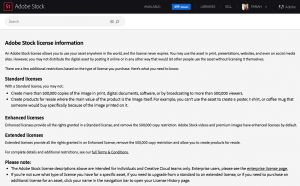
Figure 5: License definitions for Adobe Stock.
The Standard and Extended license options of fewer than 500,000 copies or viewers versus unlimited has become common with the larger agencies throughout the stock photography industry. iStock, owned by the granddaddy, Getty Images, offers terms similar to Adobe’s but many more size and price tiers. Figure 6 shows a typical iStock image available for licensing. Figure 7 shows the available options for the Extended license of the same image.

Figure 6: Different sizes available for an iStock image.
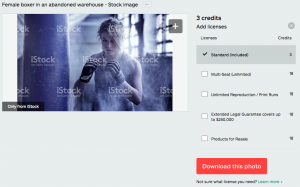
Figure 7: iStock’s add-ons to create an Extended license. With both companies, the image itself also cannot be the main value or selling point of the product under the Standard license, but can under the Extended or Enhanced.
These agencies trade in a type of licensing called royalty-free. Royalty-free is the most common licensing scheme. It enables the non-exclusive use of images by multiple licensees, meaning that both you and your competition could use the same image concurrently, though with so many millions of images available from dozens of agencies, the odds of that are slim. Under royalty-free, licensees needn’t pay royalties or licensee fees for each copy printed or viewed.
Rights-managed is the other common type of image licensing you might consider. An image licensed as rights-managed typically allows a single use after which another license must be purchased to use it used again. The licensed usage is also limited in terms of when it may be used, for how long, in what media, and in what regions and markets (see Figure 8). Photographs of public personalities, for instance, are typically rights-managed with media outlets purchasing single-use licenses relevant to specific geographies and number of copies, the last of which is often based on the circulation of the publication, such as 100,000 printed copies or 2 million average viewers.
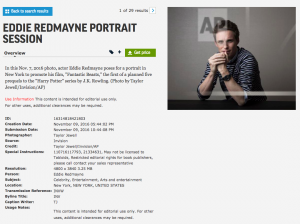
Figure 8: A rights-managed image available from the Associated Press’s AP Images agency.
When purchasing stock photography and video footage, rights-managed often gives you access to unique, more impactful images a given audience will notice and recall better than royalty-free, but using rights-managed imagery will cost more and be usable within a much narrower window.
Whichever type of licensing you choose, whatever size or kind of licensing, make sure that your organization has in place a process for documenting that licensing. A credit card receipt will not protect you from a copyright infringement suit.
Stock agencies come and go, with many of the better ones eventually gobbled up by industry giants. Photographers and collections are rotated out to make room for new content. Tastes and trends change. What imagery is available today from a given agency might not be there tomorrow. In fact, the same image may be available tomorrow but under different licensing terms. Such changes have created fertile ground for an entire industry of entities who routinely threaten, and sometimes follow through on, copyright infringement based on stock imagery usage. Automated and semi-automated systems send out thousands of letters every year to businesses of all sizes demanding payment of arbitrary penalties and after-the-fact licensing fees for stock imagery—much of which was indeed properly licensed and used within the terms of the licensing. The recipients (some say victims) of such demands typically capitulate, paying demands ranging from $250 to $12,500, because they don’t have proof of their licensing.
Don’t let your company become another victim of copyright trolls. Make sure that your compliance team and all employees, partners, and other agents authorized to purchase stock imagery, even and especially “free” or “open source” stock imagery, properly document the purchase and retain that documentation. The best way to do that is to generate court-admissible PDFs of the stock image purchase and download pages, purchase receipt, and the stock agency’s relevant licensing terms page. Most computers, including mobile devices, offer a print to PDF option either built into the system or added via installing Adobe Acrobat, a browser plugin or extension, or a similar third-party tool. Make such PDFs directly from the stock website in the browser, ensuring that options to include date, time, and the URL of the page are activated.
To properly document a purchase of an Adobe Stock image, for instance, you should print to PDF the image’s page, which shows the image itself for reference as well as the name of the license level, the Adobe Stock License Information page that defines the main points of the license level, and the complete Adobe Stock license in effect at the time of purchase, which you’ll find at the bottom of this page.
Then, store the license PDF with the licensed asset—where one goes, so must the other. Keeping both in your digital asset management system such as Portfolio is ideal because Portfolio’s powerful search features enable anyone to quickly find the license and proof of purchase (see Figure 9). It also lets you easily add metadata to the image asset so that you can replicate the basic license terms directly inside the image asset. With the terms inside the image metadata, every brand agent will have access to the licensing terms without extraordinary effort. That, in turn, makes it easy for agents to work within the license and keep your business compliant.

Figure 9: Stock imagery and the licenses and proofs-of-purchase for that imagery kept together in Extensis Portfolio.
Another area in which to maintain diligent compliance is in obtaining and keeping model releases. When a person, even part of a person such as a hand or the back of a head, is included within a photograph or video used for commercial purposes, that person is legally a model. That model has rights, including the right to control how he or she is displayed and in what context. You need to obtain a legal transfer of the model’s rights in order to make unfettered use of the image containing his or her likeness. That is typically done by having the model execute a model release form.
Like any contract, model releases vary by country and jurisdiction, and should be written by your own attorney. They are simple instruments, ones that are used every day by photographers and videographers all over, so feel free to start with an example such as this one furnished by the American Society of Media Photographers (see Figure 10).
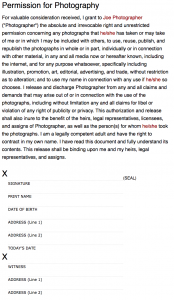
Figure 10: A sample model release form furnished by the ASMP.
Make sure that any model photography you do, or have done, has a properly executed model release from every model. Also ensure that the release assigns the usage rights to you, or that your contract with the photographer properly transfers those rights to you.
When licensing stock imagery containing people or parts of people, look for a model release; most stock agencies include on the image page the release itself or the equivalent value statement that the image is covered by a model release and that those rights are included in the license. Incorporate that release, or statement of release, into the licensing and proof of purchase PDFs you keep with the image itself.
In the next and final installment of Creating a Brand Style Guide, we’ll wrap up the series by communicating and representing all the elements and rules defined throughout the series into the final, ready for internal publication brand style guide. You will be able to start from scratch or get a head start with a free brand style guide template you’ll find available to download right from within Part 6: “Building a Brand Style Guide for All Media." We’ll also create an import-ready CSS file to bring your brand colors and typography rules into your website and EPUB ebooks.
Pariah Burke (Twitter: @iampariah) is a consultant, trainer, speaker, and the author of numerous books, video courses, and articles covering InDesign, InCopy, Photoshop, Illustrator, Acrobat, typography, asset management, epublishing, and the business of design. He is an Adobe Community Professional, an Evernote Certified Consultant, and an advisor to Adobe and other companies. He lives in Portland, Oregon.